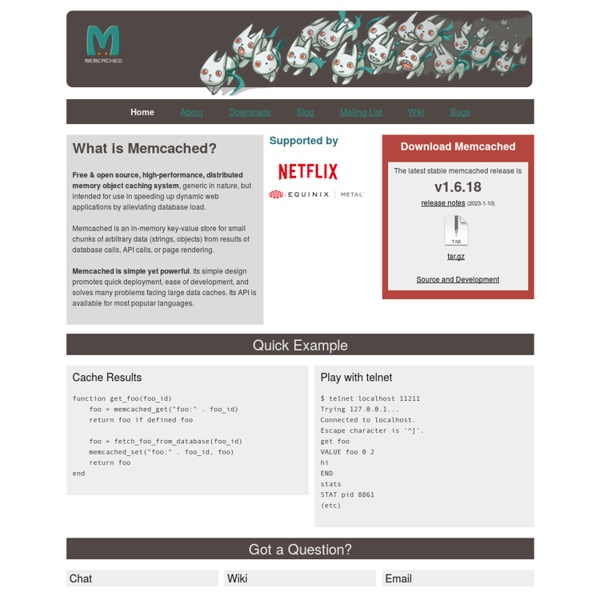NoSQL
"Structured storage" redirects here. For the Microsoft technology also known as structured storage, see COM Structured Storage. A NoSQL (often interpreted as Not Only SQL[1][2]) database provides a mechanism for storage and retrieval of data that is modeled in means other than the tabular relations used in relational databases.
Arguments in favour of PostgreSQL
From MoodleDocs Martin Langhoff argues in favour of PostgreSQL (source: Moodle over webct and LNLS at Athabasca University? forum posting) There are several reasons to go with Postgres, I'll try to make a brief outline. We run a variety of RDBMSs at Catalyst, and have a lot of in-house experience with them: Oracle, Postgres, MySQL and Progress, plus a few others.
Stack: Overview
Get Started Now With Typesafe Activator What is a Reactive application? Reactive applications are a new class of applications that are becoming more and more prevalent in both Consumer and Enterprise-facing environments. Reactive applications are fundamentally different to the traditional web-based or mobile applications seen today and are distinguished by having one or more of the following defining traits: Event-Driven: Enables parallel, asynchronous processing of messages or events with ease. Scalable: Can scale within and across nodes elastically to provide compute power on-demand when it’s needed.
What is NoSQL Database & Why NoSQL
Big Users Not that long ago, 1,000 daily users of an application was a lot and 10,000 was an extreme case. Today, with the growth in global Internet use, the increased number of hours users spend online, and the growing popularity of smartphones and tablets, it's not uncommon for apps to have millions of users a day. Supporting large numbers of concurrent users is important but, because app usage requirements are hard to predict, it’s just as important to dynamically support rapidly growing (or shrinking) numbers of concurrent users: A newly launched app can go viral, growing from zero to a million users overnight – literally.
Innodb Performance Optimization Basics
November 1, 2007 by Peter Zaitsev77 Comments Note: There is an updated post on this topic here. Interviewing people for our Job Openings I like to ask them a basic question – if you have a server with 16GB of RAM which will be dedicated for MySQL with large Innodb database using typical Web workload what settings you would adjust and interestingly enough most people fail to come up with anything reasonable.
Home · tinkerpop/blueprints Wiki
Blueprints is a collection of interfaces, implementations, ouplementations, and test suites for the property graph data model. Blueprints is analogous to the JDBC, but for graph databases. As such, it provides a common set of interfaces to allow developers to plug-and-play their graph database backend. Moreover, software written atop Blueprints works over all Blueprints-enabled graph databases. Within the TinkerPop software stack, Blueprints serves as the foundational technology for:
JMeter Scripts fÓRUM
Hi Anton, Ok, so it looks like you've tested your server with 500 concurrent connections, over a 500s period, equating to 3600 'hits' on the web server (split 2/3 over index.php/logout.php). I'd intiially suggest that you add a ramp-up period of 15-30s. 500 threads with no warmup is unlikely to happen in the real world, and a ramp-up period will give things like PHP caching time to prime itself.
Home · tinkerpop/pipes Wiki
Pipes is a dataflow framework using process graphs. A process graph is composed of Pipe vertices connected by communication edges. A Pipe implements a simple computational step that can be composed with other Pipe objects to create a larger computation.



